Traffic Control Systems Handbook: Chapter 10. Traveler Information Systems
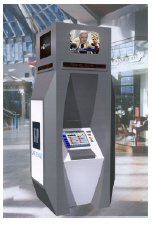
Figure 10-1. Traveler Information Kiosk (1)
10.1 Introduction
From the point of view of the motorist, one of the most important functions of any traffic management system is the dissemination of information. Information dissemination to travelers includes both pre-trip planning information, as well as real-time en-route information. Although information dissemination is often associated with freeways, it has become increasingly important on surface streets as well.
10.2 Static Signs
Static signs convey only one message. Single-message displays are most useful in recurrent situations where the engineer desires the same driver response each time. Therefore, the engineer should position static signs in locations where the message always proves meaningful.
The Manual on Uniform Control Devices (MUTCD) remains the principal source of standards for static signs (2). The MUTCD also provides the traffic engineer with guidance on signs relative to:
- Use,
- Design,
- Application,
- Placement, and
- Maintenance.
The Traffic Engineering Handbook (3) further clarifies some terms and procedures identified in the MUTCD. The Handbook discusses practical implementation and refers to other State and Federal documents that fill in details purposely left open by the MUTCD. Many states have standards that define their implementation of the MUTCD.
Static signs are classified into three basic types:
- Regulatory signs that inform roadway users of:
- Traffic laws or regulations, and
- The applicability of legal requirements otherwise not readily apparent.
- Warning signs inform roadway users of potential or existing hazardous conditions on or adjacent to a highway or street.
- Guide signs inform roadway users of:
- Directions to common destinations,
- Roadway identification via route markers, and
- Other valuable information.
State laws allow for enforcement of these signs by police and other local authorities.
Table 10-1 provides examples of the intended use of each basic sign type.
| Static Sign Type | Purpose | Typical Uses |
|---|---|---|
| Regulatory | To inform motorists of traffic laws and regulations |
|
| Warning | To warn motorists of unusual existing or potentially hazardous condition (s) on or adjacent to a street or highway |
|
| Guide | To provide destination and directional information |
|
Though normally considered passive, static signs can be transformed into active signs by adding flashing beacon signals. An active sign's message is valid only when the signals flash. An example is:
"School Speed Limit XX MPH When Flashing."
Figure 10-2 depicts an active sign. Note the solar panels that power the flashing beacons. This display type compares favorably to changeable message signs in terms of both cost and the agencies' capability to fabricate it.
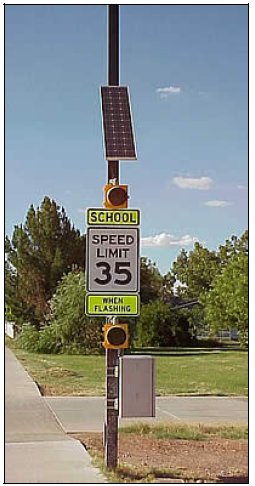
Figure 10-2. Active Sign.
Active signs typically see use in traffic management functions and provide a lower cost solution than blank out signs (a form of changeable message sign). Section 10.3 further describes blank out signs. A time-clock switch closure or a communication signal can readily activate the flashing beacons associated with active signs.
Traffic engineers also add extinguishable blank out text to static signs, thus creating a hybrid. The blank out text activates when applicable and supplements the static sign message. Figure 10-3 shows blank out sign text added to a static guide sign.

Figure 10-3. Static Sign Hybrid.
The MUTCD also recommends the use of diagrammatic guide signs along freeways to:
- Graphically depict the exit arrangement in relationship to the main highway. Such guide signs have proven superior to conventional guide signs for some interchange types (2).
- Use at advance guide sign locations where:
- Splits have off-route movements to the left,
- Optional lane splits exist, and
- Exits where route discontinuity and left-exit-lane drops exist (2).
The MUTCD also includes standards for:
- Sign background,
- Letter color, and
- Shape and size.
Many signs for roadway maintenance and construction areas largely duplicate normal regulatory warning and guide signs. To identify their temporary character, all roadway maintenance and construction signs use an orange background.
The MUTCD also addresses signs for HOV and bicycle facilities, and provides information on the use of guidance devices such as:
- Object markers,
- Pavement markings, and
- Roadway delineators.
Recent developments in static signs include:
- Solar-powered light emitting diodes (LEDs) to further self-illuminate static sign messages, and
- The addition of yellow or red LEDs to diagrammatic guide signs to indicate congested road sections.
Figure 10-4 depicts a static yield sign with LEDs incorporated to further distinguish the sign and draw attention to it.
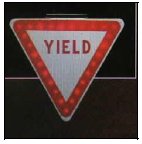
Figure 10-4. LED Illuminated Static Yield Sign
Figure 10-5 shows another method of internally illuminating static signs. The enclosure contains fluorescent lamps behind the sign panel that improve the sign's visibility.
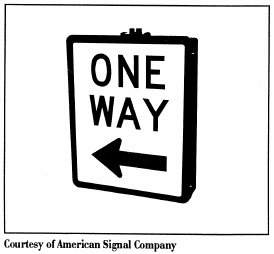
Figure 10-5. Illuminated Fluorescent Sign
10.3 Advanced Methods of Information Dissemination
Static signs are the most basic method of information dissemination. Advanced technologies provide additional methods of giving information to travelers. These methods may be broadly classified as on-roadway and in-vehicle, or off-roadway. For more detailed information on the technology used in the various methods, refer to the Freeway Management and Operations Handbook (4).- On-Roadway and In-Vehicle:
- Changeable Message Sign (CMS): CMS signs are a variety of different types of signs that display changeable messages to give motorists real-time information on local conditions. CMS may be permanent or portable. Table 10-2 identifies some applications of CMS. Figure 10-6 shows an example of a surface street CMS.
- Highway Advisory Radio (HAR): HAR uses a special radio station to give information to travelers. A HAR system consists of a radio transmitter to transmit the information, and signs telling motorists what radio station to tune to. The signs usually include beacons that flash when there is an important HAR message. Although primarily used for freeways, HAR may be used in limited ways on surface streets. HAR may be permanent or portable.
- Cellular Telephone Hotlines: Cellular phones can be used to access special hotlines with route-specific traffic information. In response to the U.S. Department of Transportation's petition the Federal Communication Commission (FCC) designated 511 as the national traveler information telephone number.
- Commercial Radio: Commercial radio stations often include traffic reports.
- Citizen-Band Radio: CB radios allow two-way communication between a motorist and a response agency, and are useful in a motorist aid service. Although CB radios are not as popular as they once were, they are still found in a significant number of trucks and commercial vehicles.
- In-Vehicle Route Guidance Systems: Video Display Terminals (VDTs) may be mounted on the dashboard, and provide real-time route guidance and navigational information to the motorist. They can display information either on a map, which can highlight the recommended route, or by displaying text and simple symbolic signals (such as an arrow). This type of information may also be provided by voice. Surveillance information may be used to take current traffic conditions into account in the development of route guidance paths.
| Category | Applications |
|---|---|
Traffic management and diversion |
|
| Warning of adverse conditions |
|
| Control during construction and maintenance operations |
|
| Control of special use of lanes |
|
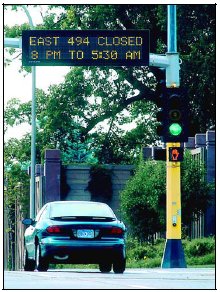
Figure 10-6. CMS on surface street.
- Off-Roadway: Access while not in a vehicle can be useful for pre-trip planning.
- Television: Many commercial television stations provide traffic information, either as a scheduled part of their morning program, or by interrupting regular programming.
- Telephones: Telephone hotlines may be used to provide pre-trip information, and also for real-time ride sharing matching.
- Pagers: Alphanumeric pagers are another device that can be used to obtain pre-trip information. Motorists can receive hourly information on traffic and rideshare matching sent to their pagers.
- Personal Data Assistants (PDAs): PDAs can be used in conjunction with RF communications to receive real-time traffic information, allowing more detailed information than an alphanumeric pager.
- Computers (Internet): In recent years, the internet has become one of the most important methods for information dissemination. Many areas have public agencies and private services that display real-time, route specific traffic information. The internet can also be used to access static information, such as bus schedules.
- Kiosks: Kiosks are video monitors mounted on a stand-alone cabinet, in a wall, or on a counter-top. They may have input devices such as keypads, trackballs, or touch-screen displays. Kiosks may be located in places such as hotels, restaurants, airports, service stations, and retail establishments.
10.4 Advantages and Disadvantages of Various Methods of Information Dissemination
Table 10-3 describes the advantages and disadvantages of various methods of information dissemination.
| Method | Advantages | Disadvantages |
|---|---|---|
| Changeable Message Signs (CMS) |
|
|
| Highway Advisory Radio (HAR) |
|
|
| Cellular Telephone Hotlines |
|
|
| Commercial Radio |
|
|
| Citizen Band (CB) Radio |
|
|
| In-Vehicle Navigation Systems) |
|
|
| Television |
|
|
| Telephones |
|
|
| Pagers |
|
|
| Personal Data Assistants (PDAs) |
|
|
| Computers (Internet) |
|
|
| Kiosks |
|
|
Uses of Traveler Information Devices on Surface Streets
- Congestion: Almost any form of information dissemination can be used to give information on congestion on both freeways and surface streets. For example, a CMS can be used on a surface street either to give information on the surface street itself or information on an intersecting freeway. HAR, as well as other forms of media (such as internet or television or commercial radio) can give city-wide congestion information.
- Incidents: Information dissemination is also useful in the case of an incident on a surface street. A portable CMS may be deployed at the incident location to inform motorists. Portable CMS may also be used upstream of an incident to advise of a detour if road closures are involved. HAR, as well as other forms of media, could alert motorists of the incident.
- Construction: Similar to incidents, information dissemination is useful during construction activities. Like incidents, portable CMS, HAR, and other forms of media can alert drivers to the construction, and also advise of alternate routes. For an especially major construction project, an internet service or hotline can give up to date information on the status of construction, information on road closures, and travel time information.
- Route Guidance: A variety of different methods of information dissemination can be used to provide route guidance on surface streets. In-vehicle navigation systems (video display terminals, head up systems) can give customized, turn-by-turn route guidance information. A variety of internet services also can give turn-by-turn directions between two points. In many cities, CMS can be used on the surface street network to direct motorists to the best route to a destination such as a bridge or tunnel. Often, a hybrid sign, including both a static component and a changeable component (such as arrows) can be used for this purpose.
- Weather: Various forms of media, including HAR, can give motorists information relating to severe weather conditions, and how it affects driving, including road closures. Portable CMS can be used on surface streets to inform motorists of severe conditions, road closures, and alternate routes.
- Special Events: Portable CMS can be used to direct motorists to special events, to give parking information, and to give alternate routes to traffic wanting to avoid the area of the special event.
- Emergencies / Evacuation: In recent years, increased attention has been given to security issues. In the event of an emergency, such as a terrorist attack, various media forms, including HAR, as well as CMS can be used to alert motorists of evacuation routes, closed roads, and restricted roads.
- Parking: CMS or HAR can be used to alert drivers of which parking lots are closed or full, and the locations of alternate parking locations.
- Transit information: Internet services, PDAs, and kiosks are useful for information relating to public transit schedules. They can deliver both static information, as well as real-time information related to delays, schedule changes, and bus route diversions.
1. "What are Intelligent Transportation Systems." Hudson Valley Transportation Management Center (http://www.hudsonvalleytraveler.com/its.html).
2. "Manual on Uniform Traffic Control Devices." Federal Highway Administration, Washington DC, 2000.
3. Pline, J.L. (editor). "Traffic Engineering Handbook." 5th Edition. Institute of Transportation Engineers, Washington, DC, 2000.
4. Neudorff, L.G., J.E. Randall, R. Reiss, and R. Gordon. "Freeway Management and Operations Handbook." Federal Highway Administration Report No. FHWA-OP-04-003, Washington, DC, September 2003.